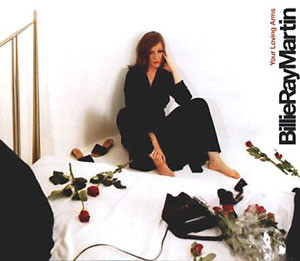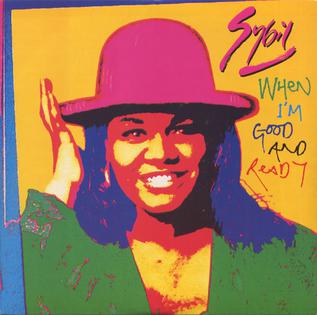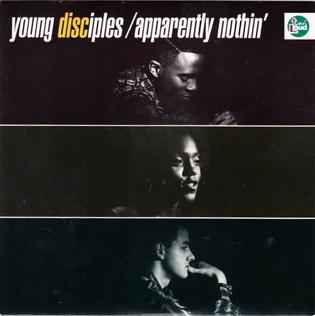
New Musical Express (NME) is a British music, film, gaming, and culture website and brand. Founded as a newspaper in 1952, with the publication being referred to as a 'rock inkie', the NME would become a magazine that ended up as a free publication, before becoming an online brand which includes its website and radio stations.

Music Week is a trade publication for the UK record industry distributed via a website and a monthly print magazine. It is published by Future.

The UK Singles Chart is compiled by the Official Charts Company (OCC), on behalf of the British record industry, listing the top-selling singles in the United Kingdom, based upon physical sales, paid-for downloads and streaming. The Official Chart, broadcast on BBC Radio 1 and MTV, is the UK music industry's recognised official measure of singles and albums popularity because it is the most comprehensive research panel of its kind, today surveying over 15,000 retailers and digital services daily, capturing 99.9% of all singles consumed in Britain across the week, and over 98% of albums. To be eligible for the chart, a single is currently defined by the Official Charts Company (OCC) as either a 'single bundle' having no more than four tracks and not lasting longer than 25 minutes or one digital audio track not longer than 15 minutes with a minimum sale price of 40 pence. The rules have changed many times as technology has developed, the most notable being the inclusion of digital downloads in 2005 and streaming in July 2014.

"Pale Movie" is a song by British pop group Saint Etienne, released in February 1994 by Heavenly Records as the first single from the group's third album, Tiger Bay (1994). The song reached number 28 on the UK Singles Charts and also became a hit in Iceland, peaking at number 24. In common with the folk music theme of the album, the song combines a Eurodance beat with Spanish folk-style guitars. The lyrics use surreal imagery to describe a man's love for a mysterious woman. Although the title is not sung, some of the words refer to cinema: "In the bed where they make love / She's in a film on the sheets. / He shows dreams like a movie, / She's the softness of cinema seats." Other lines are stranger: "her skin as white as the milk, / Just like a Sherpa Tenzing / under a Manila silk."

"Two Can Play That Game" is a song by American R&B singer-songwriter Bobby Brown from his third album, Bobby (1992). The single release was remixed by K-Klass and originally reached No. 38 on the UK Singles Chart in June 1994. In April 1995, it re-entered the chart, peaking at No. 3. It received positive reviews from music critics and also reached No. 3 in the Netherlands. Additionally, it became a top-20 hit in Belgium, Denmark, Finland, Ireland, and Italy. On the Eurochart Hot 100, "Two Can Play That Game" peaked at No. 10. This version of the song appeared on Brown's remix album of the same name, released later in 1995.

"You Don't Love Me " is a song by Jamaican recording artist Dawn Penn, released in February 1994 by Big Beat as the first single from her first studio album, No, No, No (1994). The song's lyrics are credited to Penn, Bo Diddley and Willie Cobbs, and production was handled by Steely & Clevie.

"Your Loving Arms" is a song by German singer Billie Ray Martin, the former lead singer of Electribe 101. It was released by Magnet and Sire in October 1994 as the first single from the singer's debut solo album, Deadline for My Memories (1995). Written by Martin and David Harrow, it received critical acclaim and is known to be one of her most notable singles. It was produced by English electronic dance group the Grid and was originally released on October 31. The track found greater chart success in 1995, when it peaked at number one in Italy and on the US Billboard Hot Dance Club Songs chart, and number six on the UK Singles Chart. On the Eurochart Hot 100, it reached number 21. There were made two different music videos for the song. The success of "Your Loving Arms" earned Martin the prize for Best New Dance Solo Artist of 1995 at the International Dance Music Awards in Miami, and Mixmag featured it in the magazine's "100 Greatest Dance Singles of All Time" list.

"Playing with Knives" is a song by British electronic dance music group Bizarre Inc. It was their second single released through Vinyl Solution, as well as their second single to be written and produced as a trio. It is also the first single from their debut full-length album, Energique (1992). The song originally reached number 43 in the UK Singles Chart in March 1991. It was re-released later the same year and peaked at number four in the UK charts. In 1999, the song was released for a third time, charting at a peak of number 30.

"I'm Looking for the One (To Be with Me)" is a song by American hip hop duo DJ Jazzy Jeff & The Fresh Prince, released in November 1993 by Jive as the third single from the duo's fifth studio album, Code Red (1993). The song peaked at number 79 on the US Billboard Hot 100. It samples "Tell Me If You Still Care", a song sung by the S.O.S. Band, and is written by Jimmy Jam & Terry Lewis.

"When I'm Good and Ready" is a song by American R&B and pop singer-songwriter Sybil, released on March 8, 1993, as the first single from her fifth album, Good 'N' Ready (1993). Written and produced by Stock/Waterman, it also features backing vocals by Mae McKenna, Stock and Miriam Stockley. It went on to become one of her most successful songs and a major hit on the charts in Europe, reaching the top 10 in the UK and Ireland, peaking at number five and six. Additionally, it was a top-20 hit in Austria and a top-50 hit in Germany. On the Eurochart Hot 100, it reached number 21 in May 1993.
"Let Your Body Go Downtown" is a song co-written by Lynsey de Paul and Mike Moran, and recorded by the Martyn Ford Orchestra as a single on 18 March 1977 on the Mountain record label. A 12-inch single was also released. It was also released in France, Germany, Italy and The Netherlands on Vertigo Records. It was a BBC Radio 1 "Record of the Week" and playlist by a number of UK regional radio stations. As noted by Record World magazine, it took the single three months to enter the official UK Singles Chart. However, this insistent funk/soul/disco song reached No. 38 on that chart, No. 34 on the NME singles chart, No. 37 on the EveryHit Retrocharts and No. 12 on the UK Disco Chart, published by Record Mirror. It was also released as a track on the album "Ronnie Jones Presents Let-Your-Body-Go-With-The-Disco" released on the Phillips record label in Italy and it received numerous radio plays there as listed in "Radiocorrier". A live performance of the song featuring Ford, his orchestra and backing singers was shown on the 12 May 1977 edition of Top of the Pops.
"Do You Want It Right Now" is a song by American singer Siedah Garrett from the 1985 film Fast Forward. It was a bigger hit for Degrees of Motion in 1991. It has also been recorded by Taylor Dayne for her debut studio album, Tell It to My Heart (1988). A lyric sample of it was also used in Gat Decor's song "Passion", as well as in Armand Van Helden's 2007 hit "I Want Your Soul".

"Everybody" is a song by Swiss Eurodance artist DJ BoBo, released in May 1994 by Fresh label as the fourth and last single from the artist's debut album, Dance With Me (1993). Co-written and co-produced by BoBo, the song was very successful in Europe, reaching number-one in Finland, number two in Germany, and number three in Switzerland. Additionally, "Everybody" was a top 10 hit in Iceland and the Netherlands, peaking at number eight and ten, respectively. The female vocals are performed by Jennifer Rüsch. The music video for the song was directed by Giacomo de Simone and filmed in Italy.

"U R the Best Thing" is the debut single of Northern Irish musical group D:Ream, included on their first album, D:Ream On Volume 1 (1993). Originally a club hit released in 1992, the song has been remixed and re-released twice: in 1993 and in 1994. The 1994 version, also known as the Perfecto mix, was most successful peaking at number three in Scotland, number four on the UK Singles Chart and number six in Ireland. It also peaked at number 13 on the Eurochart Hot 100. The 1993 version reached number one on the Billboard Hot Dance Club Play chart in the US. There were made three different music videos to promote the single.

"Apparently Nothin" is a song by British/American acid jazz band Young Disciples. It features singer Carleen Anderson, who also co-wrote it and was released in 1991 by Talkin' Loud as the second single from the band's only album, Road to Freedom (1991). The song samples "Here I Am Baby" by the Marvelettes and is inspired by the Gulf War. It peaked at number 13 on the UK Singles Chart, but on the UK Dance Singles Chart, it was a even more successful, peaking at number two. Additionally, it was a top 20 hit in Luxembourg and a top 40 hit in the Netherlands. The band performed the song in the British music chart television programme Top of the Pops. It remains their biggest hit and is now widely considered as a classic of its genre.












